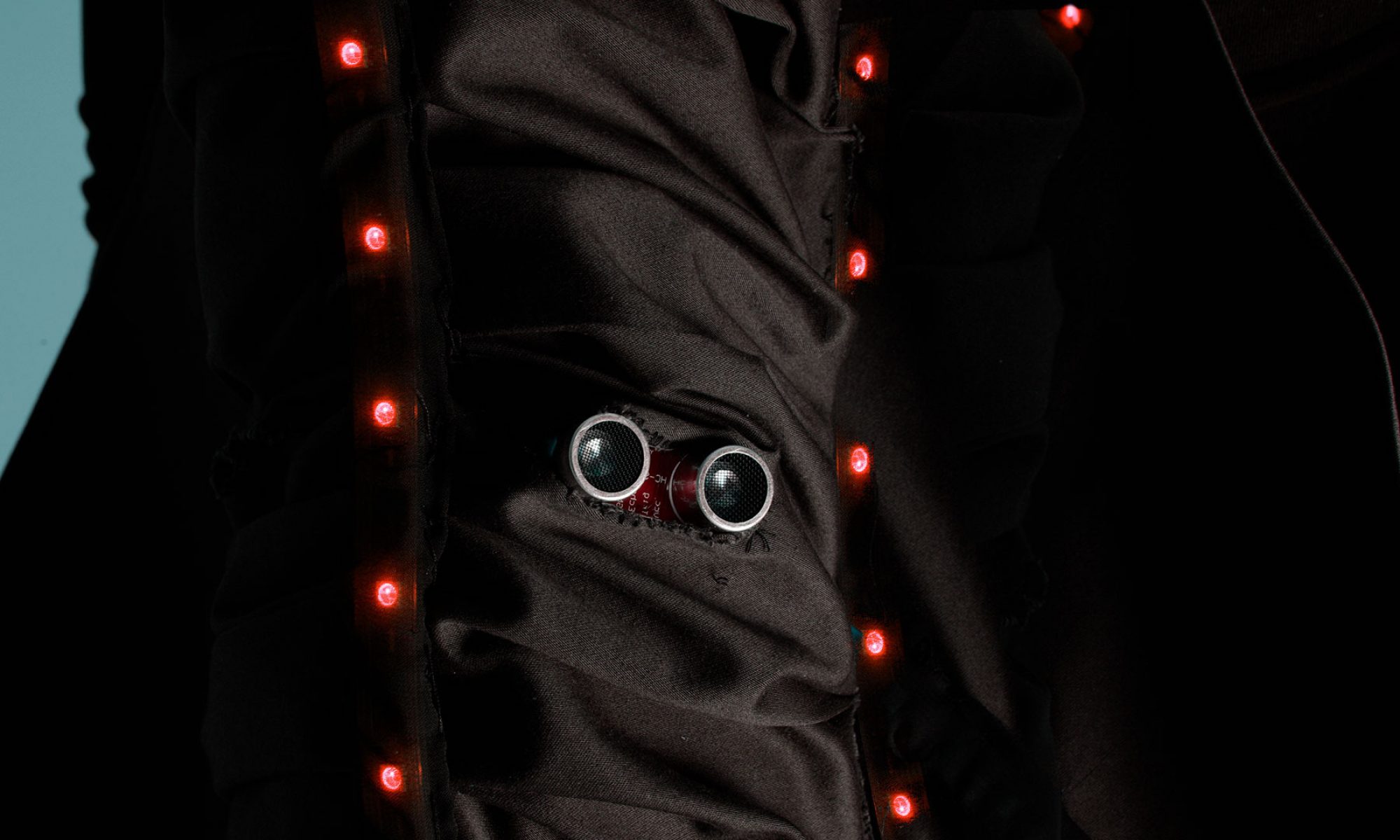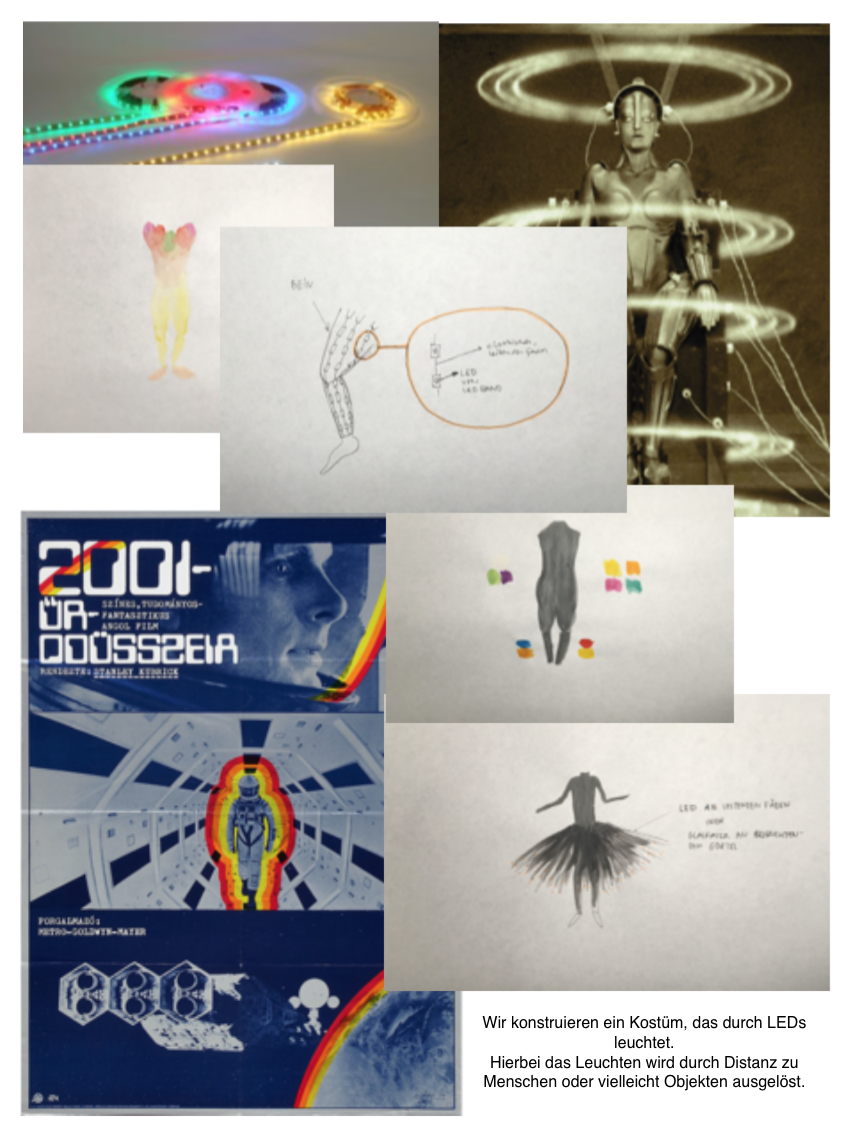Approach
In the beginning of the project I was thinking of a costume, that was made for a more performative and improvisational dance. That said, I considered the dancers in Altenburg as testers for the costume, who should be able to demonstrate the way of working it. That required a costume, that was easy to use – even for dancers who do not feel comfortable with improvisations. I was also having an eye on the problem, how people, who do not have time, to learn a whole new choreography, can use an interactive costume. This lead me to the following steps:
- find a sensor, that enables people to move beautifully
- find a task for the dancers so that they can lean on something, when they do not have a spontaneous idea on how to improvise
Inspiration
I was looking for people dancing all over the amazing internet and collected scenes, that where fitting to the situation with the dancers, that I imagined. When Franzi told, she liked the idea of building a story about “oppression and liberation” I was immediately inspired to work on a coming-of-age scenario, as our testers were supposed to be younger and maybe still in that phase. I wanted them to have an easy access to the subject plus I do still find it very inspiring. Also we decided on light as an output, as we expected mechanical output to turn out instable. A sound output would also have been possible, but we did not want to go for a to experimental approach, that might be to restricting to the possibility to still play music in the dance performance.
The videos I found most fitting where those:
- Scene from the series “Girls” showing girl dancing wildly, not beautifully, but making me want to dance, to.
2. Scene in “Ex Machina”, where the light plays an important role and also the moves look really stupid but are fun at the same time.
https://www.youtube.com/watch?v=TF0ZIECM7_0
Like in the those two videos, I was looking for easy ways to dance, that are fun for people to watch, so that the dancer gets an easy access to the audiences emotions.
Meeting the dancers in Altenburg
Having all that in mind, I was thinking about which questions to ask the dancers in Altenburg to get the information to maybe work with later.
The most important things I wanted to know were:
- How comfortable are they with improvising their dance and movements.
- Which movements will look good, even though they are not practiced
- Which music do they dance to “for fun”, when it does not need to look good.
I found out, that, when the Altenburg-dancers were told to move their whole body but concentrate on one part of the body, that is not supposed to move, worked very well. It looked beautiful and was also easy to improvise on. So both my main criteria fit in well. Also I asked them to send me some music, because it would make it easier for the second meeting, to create a scene, where they feel comfortable dancing, even without a choreography. I wanted to find some music that might be similar to their favorite songs, but not the same ones, to not create a too private scene but still to have something, they have an easy access transforming it to dance moves.
For better being able to show the dancers, what our costume could be like and how it might work, we created a moodboard. This is, what I came up with:
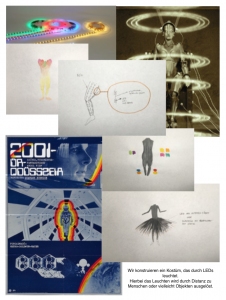
I liked the idea of having a futuristic and very simple appearance in the garment and let the excitement be made by the way of use, so to speak the trigger.
Sensor
After some research, I found, that a PIR element would be the smartest choice to make that movement (do not move a special part of your body, but everything else) a perfect trigger.
I tried out the PIR element and had some trouble to get a signal out of it – possibly due to a broken cable – but in the end, it worked. I tried out many internet based advices, but this one was the one I was finally able to run my sensor with:
http://bildr.org/2011/06/pir_arduino/
In the group, we decided, that I should try out some Flex/Bend Sensors, too. I have documented the results in two other posts:
Costume Sketches
The idea of a grey body felt pretty safe to me, as the dancer would not be restricted in any movement and we were still free to add additional components (e.g. skirt or top) easily, in case we thought of another output or in case the microcontroller needed to be hidden somewhere. Also with this simple silhouette the light would have been easy to place and replace and it would have be seen from nearly any angle, also they would have shined strongly on a darker background as they would have on a light one. The colors next to the suit just where a place holder for the possible colors of the output.
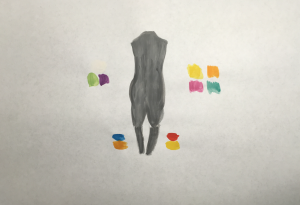
This picture shows a possible spectrum and color representation on the garment.
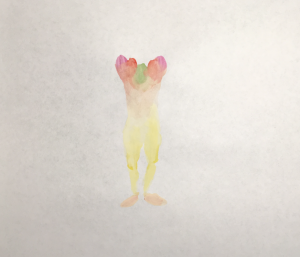
This picture shows the possibility of adding a skirt, that could have lightoutputs just in the tips of the “pipes” it is made of. I thought of LEDs that might be showing out at the open end of each pipe, cables would also have been possible to lead through them. For this skirt, movement could also have been a nice trigger, to let it light up – I thought of that because I knew, we had an accelerometer in the lab. But also the PIR element would have been a fun sensor to try out on different body parts with this.
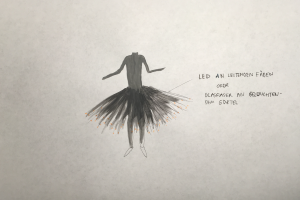
When I thought of a light output without a special sensor, I had the idea of placing separate LEDs all over the body (or body parts), that were connected through resistant/conductive yarn, that would break the circuit as soon as stretched. This would have provoked a sensitive light reaction on to the movement related parts of the body.
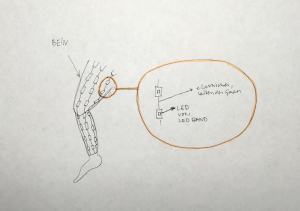
Why this approach was scrapped
In one of the group meetings, it came up, that it might not be a good idea letting people improvise, who feel uncomfortable in doing so. I was believing in the fact that under the right circumstances – for example with the right songs, the right trigger and the right instructions – that might have been possible. I think, that if the dancers in Altenburg were given instructions that they could “play with”, they would not have felt uncomfortable. The instruction I would have been aiming on with the PIR element as a trigger would have been “Try to dance, so that you do not trigger the light in the costume.”. This might have even been fun for them as this instruction rather resembles a game than a situation, where they need to come up with some beautiful dance spontaneously.
During the group meeting, we had a discussion about the minimal time frame, that we would have with the dancers when presenting our prototype, which would make an improvisation much more difficult. So it was decided, that we must rely on the choreography of the Altenburg dancers (which was presented to us when we were visiting). I immediately saw, that the PIR element would not be of any use for that purpose, as it was chosen by a complete different approach to the whole situation. In this choreography, too many persons are appearing, which would trigger the costume permanently and disentitle the dancer of the control of the lights. That is definitely not the purpose of an interactive dance costume. As all the other ideas were based on the same approach of an improvising (“game playing”) solo dancer, they did not seem combinable with ideas that were made for a dance in a group on a choreography and therefore were scrapped, too.
